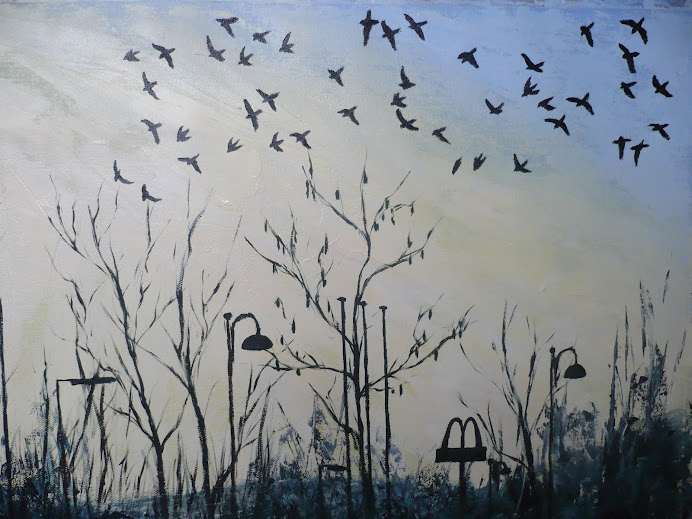 I know this is such a touristy thing to do, but it had to be done! This is me next to one of the Henry Moore sculptures that I saw when I went to the Tate at the end of May for the contextual studies workshop with Richard Lilley where we discussed and sketched lot of the paintings from the modern British art collection, I've written all about it in my logbook. I also went to the Henry Moore exhibition which was downstairs, and I've written about it in my logbook too because his sketches in particular were a source of inspiration to me, especially in the "Figures in an Interior" project.
I know this is such a touristy thing to do, but it had to be done! This is me next to one of the Henry Moore sculptures that I saw when I went to the Tate at the end of May for the contextual studies workshop with Richard Lilley where we discussed and sketched lot of the paintings from the modern British art collection, I've written all about it in my logbook. I also went to the Henry Moore exhibition which was downstairs, and I've written about it in my logbook too because his sketches in particular were a source of inspiration to me, especially in the "Figures in an Interior" project.I love his sculptures too though, and this figure stopped me in my tracks when I walked in to the building. She was so tender and monumental at the same time, a bit like a whale, if you know what I mean. I've read the book "Celebrating Moore" which has so many photo's of his work in it that it makes you giddy. I'd love to see some more, especially the ones that are outside like on big hillsides. I've been to the Barbara Hepworth Museum down in St Ives, and her work looks so wonderful when it's outside, which a lot of it is as it's arranged in her garden as she wanted it to, and the sculptures look like they're growing out of the soil, which I can imagine Moore's work being like when viewed outside.


 Having completed the background in the previous stage, all that was left was to add the detail for the figure. I started off by redefining the highlights where the sun was hitting the limbs and torso, then added shade to the opposite side. Closer study of the photo showed me areas from the body that were being refracted by the water, and it's interesting to see how much of a difference it's made to the implied movement of the figure that there are areas around the arm on the right and the head and legs that have been split up like a prism, and the water has overlapped into the areas of the body.
Having completed the background in the previous stage, all that was left was to add the detail for the figure. I started off by redefining the highlights where the sun was hitting the limbs and torso, then added shade to the opposite side. Closer study of the photo showed me areas from the body that were being refracted by the water, and it's interesting to see how much of a difference it's made to the implied movement of the figure that there are areas around the arm on the right and the head and legs that have been split up like a prism, and the water has overlapped into the areas of the body. 






